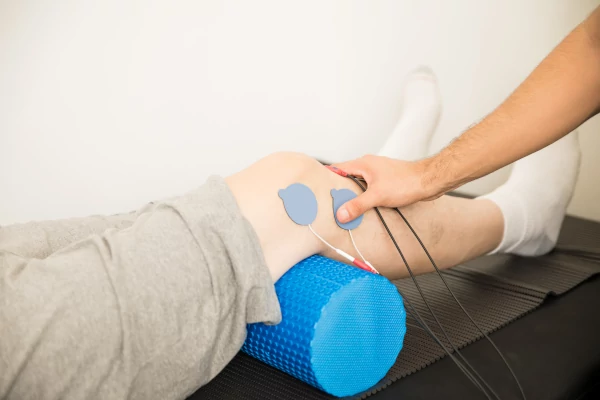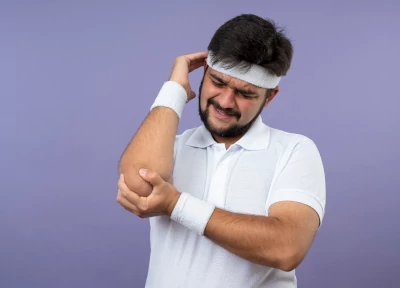Stroke is a condition that affects millions of people worldwide. It occurs when the blood flow to the brain is disrupted, leading to damage to brain cells. One of the most common effects of stroke is a physical impairment, which often requires extensive rehabilitation. Physiotherapy is a crucial component of stroke rehabilitation that can help patients regain their mobility, strength, and independence. In this article, we will discuss the importance of physiotherapy in stroke recovery, the different techniques used by physiotherapists, and the benefits of physiotherapy in stroke.
What is Stroke?
Stroke is a debilitating medical condition that occurs when there is a disruption in the blood flow to the brain. This can happen due to a blockage or rupture of blood vessels, which results in brain cells not receiving enough oxygen and nutrients. As a result, brain cells start to die within minutes, leading to permanent brain damage and long-term disabilities. The symptoms of a stroke can vary depending on which part of the brain is affected but can include sudden weakness, numbness or paralysis on one side of the body, slurred speech, loss of vision, and severe headache. Stroke is a medical emergency, and early recognition and treatment are crucial to minimize brain damage and improve outcomes.

Types of Stroke
There are three main types of stroke.
- Ischemic stroke
- Hemorrhagic stroke
- Transient ischemic attack (TIA)
Ischemic stroke is the most common type, accounting for around 85% of all strokes. It occurs when a blood vessel in the brain is blocked, usually by a blood clot.
Hemorrhagic stroke, on the other hand, happens when a blood vessel in the brain ruptures and bleeds into the surrounding brain tissue.
TIAs, also known as mini-strokes, are caused by a temporary disruption of blood flow to the brain and can last for just a few minutes or up to 24 hours.
Regardless of the type of stroke, early recognition and treatment are crucial to minimize brain damage and improve outcomes.
Effects of Stroke on the Body
Stroke can have a significant impact on the body and can lead to long-term physical and cognitive disabilities. The effects of stroke depend on which part of the brain is affected and how severe the damage is. Physical effects of stroke can include paralysis or weakness on one side of the body, difficulty speaking or understanding speech, loss of vision or blurred vision, and difficulty swallowing. Cognitive effects of stroke can include memory loss, confusion, difficulty with reasoning or problem-solving, and changes in behavior or mood. The effects of stroke can be long-lasting and may require ongoing rehabilitation and support. However, with early recognition and treatment, many people are able to make significant recoveries and improve their quality of life.
Stages of stroke recovery
Stroke recovery is a complex process that involves multiple stages, each with its own unique challenges and goals.
The first stage of stroke recovery is the acute phase, which typically lasts for the first few days after the stroke occurs. During this phase, the focus is on stabilizing the patient’s condition and preventing further damage to the brain.
The next stage is the subacute phase, which can last for several weeks or months. During this stage, the patient begins to regain some movement and function, and the focus shifts to rehabilitation and therapy.
The third stage is the chronic phase, which can last for years after the stroke. During this stage, the patient continues to work on improving their function and adapting to any residual deficits.
The final stage is the long-term recovery phase, which can last a lifetime. During this stage, the patient may continue to work on improving their function and preventing further complications.
Overall, stroke recovery is a complex and ongoing process that requires a multidisciplinary approach and individualized care to achieve the best possible outcomes for the patient.
The Role of Physiotherapy in Stroke Rehabilitation
Physiotherapy plays a crucial role in the rehabilitation of stroke patients. The goal of physiotherapy is to help patients regain their physical function and independence. Physiotherapists work with stroke patients to develop personalized rehabilitation programs that are tailored to their specific needs and abilities. These programs may include exercises to improve strength, balance, and coordination, as well as activities to improve range of motion and flexibility. Physiotherapists also work with stroke patients to help them relearn basic skills such as walking, getting in and out of bed, and using the bathroom. Additionally, physiotherapists may use specialized equipment such as braces, splints, or wheelchairs to help stroke patients with mobility and function. Through ongoing assessment and evaluation, physiotherapists are able to adjust treatment plans as needed to ensure the best possible outcomes for stroke patients.
Techniques Used in Physiotherapy for Stroke Recovery
passive movements
Stretching Exercises
Range of Motion Exercises
Strengthening Exercises
Balance and Coordination Training
Gait Training
Functional Training
Benefits of Physiotherapy in Stroke Recovery
Improving Mobility
Enhancing Muscle Strength
Promoting Independence
Reducing Risk of Falls
Improving Quality of Life
Conclusion
Stroke is a debilitating condition that can have a profound impact on a person’s life. Physiotherapy plays a critical role in stroke recovery, helping patients regain their physical abilities and independence. The different techniques used by physiotherapists can target specific impairments, such as weakness, balance issues, and gait problems. With consistent effort and support, stroke survivors can make significant progress in their recovery journey.
FAQs
Can physiotherapy help in all stages of stroke recovery?
Physiotherapy is a form of rehabilitation that can help individuals who have suffered from a stroke. It involves a range of exercises and techniques that aim to improve mobility, strength, and flexibility. However, the effectiveness of physiotherapy may vary depending on the severity of the stroke and the stage of recovery. In the acute stage, physiotherapy may focus on preventing muscle wastage and promoting movement. In the subacute stage, the focus may shift to more intensive therapy aimed at improving movement, balance, and coordination. In the chronic stage, physiotherapy may focus on improving function and managing any ongoing symptoms. While physiotherapy can be helpful at all stages of stroke recovery, the specific approach and goals may differ depending on the individual’s needs and condition.
How long does stroke recovery take with physiotherapy?
The length of stroke recovery with physiotherapy can vary depending on several factors such as the severity of the stroke, age, overall health, and the individual’s willingness to engage in therapy.
Can stroke patients with severe physical impairments benefit from physiotherapy?
Yes, stroke patients with severe physical impairments can benefit from physiotherapy. While the extent of the benefits may depend on the severity of the impairment, physiotherapy can still help improve mobility, reduce muscle stiffness, and prevent further muscle wasting. In cases where the patient has limited mobility, physiotherapy can include passive exercises, where the therapist assists in moving the patient’s limbs to prevent joint contractures and maintain muscle tone. As the patient progresses, active exercises can be introduced to help improve strength, balance, and coordination. Additionally, physiotherapy can also help manage pain and improve respiratory function. It’s important to note that physiotherapy is typically just one part of a comprehensive rehabilitation program that may involve other interventions such as occupational therapy, speech and language therapy, and cognitive rehabilitation, among others. Ultimately, stroke patients with severe physical impairments can benefit from physiotherapy as it can help improve their overall physical function and quality of life.
Do you know the word “Rehabilitation”? Read out our article “Rehabilitation: The Journey Towards Recovery“



